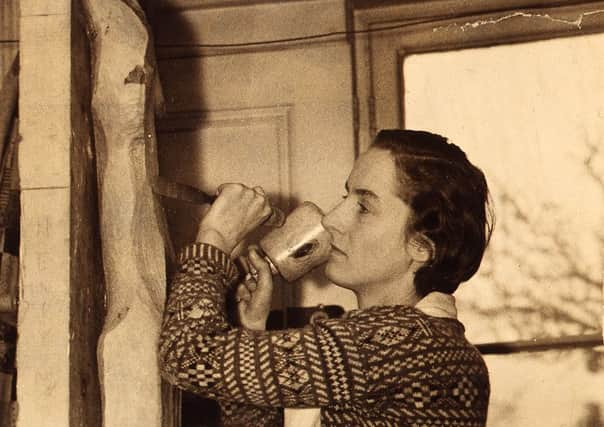The Hepworth Wakefield: Celebrating the work of lesser known artist Gertrude Hermes


The Hepworth Wakefield has done it again. Their programme consistently delivers world-class exhibitions that are original and surprising – and what they are particularly good at is showcasing the work of artists who, for whatever reason, may not be widely known.
One of their current shows is a case in point – Wild Girl: Gertrude Hermes, Sculpture and Prints is the first UK retrospective in thirty years of the work of a contemporary of both Barbara Hepworth and Henry Moore. Hermes is considered to be one of the most important British female artists of the 20th century, yet few people have heard of her.
Advertisement
Hide AdAdvertisement
Hide Ad“The reason she is not better known is that she wasn’t interested in self-promotion,” says curator Dr Sam Lackey. “For her it was the work and living her life according to certain principles – she was incredibly kind and generous. It wasn’t important to her to enter into that hustle and bustle of the art world. She went to America during the Second World War and while she was there she was offered representation by a New York gallery and she turned it down. Then she returned to the UK and went back to teaching at Central School of Arts and St Martin’s School of Art. She is really important because the work she was making easily holds its own against Hepworth and Moore and their contemporaries.”
The show contains more than forty sculptures by Hermes, including decorative commissions, and over eighty works on paper. “Although her engravings are well known her sculpture isn’t,” says Lackey. “There is a lovely one, A Bird in Hand, which was a speculative carving for a pub – it is an amazing sculpture. And another called Butterfly carved out of a plank of wood that looks like it’s just about to fly away.”
Also on display are rarely seen schoolgirl notebooks, sketchpads and drawings which offer a fascinating insight into Hermes’ development as an artist. “There are themes you can see recurring – from when she was a little girl and they return in drawings fifty years later,” says Lackey. “It makes for an extraordinarily rich exhibition. As well as the sculptures Hermes did portrait busts – there are some of her children on display – and functional sculpture. She made an amazing lectern for a school which is in the shape of an eagle. When it arrived it had its beak missing; at first I was a bit upset but then I realised that this was not an object made to be put in a glass case – it had seen thousands of children. All the pieces feel as though they are very loved and that makes the show very moving.”
Hermes’ family have all come to see the exhibition and, says Lackey, have been enthusiastic and supportive throughout. For Lackey as a curator, it has been a wholly positive experience.
Advertisement
Hide AdAdvertisement
Hide Ad“What I say about this show is that sometimes when you are working on an exhibition, by the end of it you don’t like the artist very much but this time I have fallen in love with the artist,” she says. “Living an honourable life was important to Hermes and because she taught at art schools, lots of her former students have been in touch to say what a great teacher she was and how kind and generous she was. As a gallery dedicated to Barbara Hepworth, it is brilliant to be able to show the work of one of her female contemporaries.”
Wild Girl: Gertrude Hermes, Sculpture and Prints is at the Hepworth Wakefield until January 24.